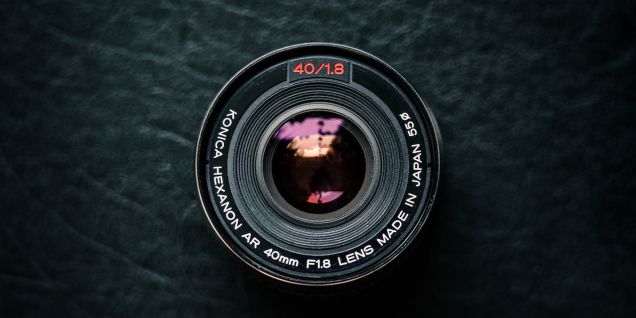How To Choose The Right Lens For Your Camera?


The lens is one of the most important components of your camera. It determines what you can see and how you see it. The right lens can help you take better pictures, while the wrong one can ruin them. Choosing the right lens for your camera can be a challenge. There are so many options, and each lens has unique properties that can make it perfect for certain situations or not so good for others.
Choosing a lens is a lot like choosing a car. You could get by with just one, but having more than one allows you to have options when you need them.
If you're new to photography or just want some clarification on what lenses do what they do, then this guide will help you figure out which types of lenses are best suited for your needs and how to choose them.
There are many things to consider when choosing a lens for your camera, from the type of photography you do to the size of your budget.
Here are some of the most important factors to keep in mind:
What kind of photography do you want to do? If you're interested in taking portraits or action shots, you'll want a lens that lets you get as close as possible to your subject. If you're interested in landscapes or architecture, on the other hand, you'll want a wide-angle lens that captures more of what's around you.
Many lenses come with autofocus capability built in — but not all of them do. Some will only focus manually. And if they do have autofocus capabilities, they may not work with all types of cameras or all brands of cameras. So be sure to check before buying!
The longer the focal length, the narrower your field of view will be. So if you want to take a group portrait of your kids running around in the backyard, you might use a telephoto lens with a long focal length (200mm or 300mm). Conversely, if you want to capture your entire family sitting at the dinner table, you'd want to use an ultra-wide angle lens with a short focal length (10mm or 15mm).
The wider your aperture is set (represented by lower numbers), the larger amount of light will reach your camera sensor when shooting at night or indoors without flash.
Lens speed refers to the amount of light that is allowed through the lens. The higher the number, the faster the lens. Faster lenses allow more light to enter the camera, thus allowing photographers to use a lower ISO setting, which results in less noise and better image quality.
This refers to how wide or narrow a lens can be used effectively. A "portrait" lens will have a longer focal length (greater magnification) and a smaller picture angle than a "landscape" or "close-up" lens. For example, when taking photos of people or subjects up close, you will want a wider angle so that you can show more detail than if using a telephoto lens on your subject from far away.
Macro lenses allow you to take extreme close-up shots without having to get too close to your subject, which can disturb them or cause them stress.
The lens mount is the part that attaches to your camera body and holds the lens in place. Lenses are made for specific mounts, so you can’t just use any old lens on any old camera body. Most cameras have proprietary mounts (that only work with lenses designed specifically for that camera) or interchangeable mounts (which allow you to use lenses designed for other types of cameras).
Conclusion
Ultimately, choosing the correct lens for your camera is going to depend on many of factors. But if you've read this far, you should now have a few key pieces of information at hand to help you do that. So go out and enjoy shooting photos of your new lens!
Popular
6 Affordable Makeup Organizers To Declutter Your Vanity
For the makeup lovers! Here are the best 6 Affordable Makeup Organizers To Declutter Your Vanity.
Look at the Stunning Debut of Alia Bhatt at the Met Gala 2023
Alia Bhatt Met Gala 2023 debut was a huge success, and she certainly made a mark with her stunning look. Now grab for more details here!
Crunches Vs. Sit-Ups: Which One Is Best For Your Abs?
Exercises that burn fat can help you lose weight .If you want to know Crunches Vs. Sit-ups: Which one is best for your Abs read below
Black Seed Oil Benefits For Hair and Skin
Black seed oil offers a wide range of benefits for hair and skin. Now get more information about black seed oil visit the blog!
